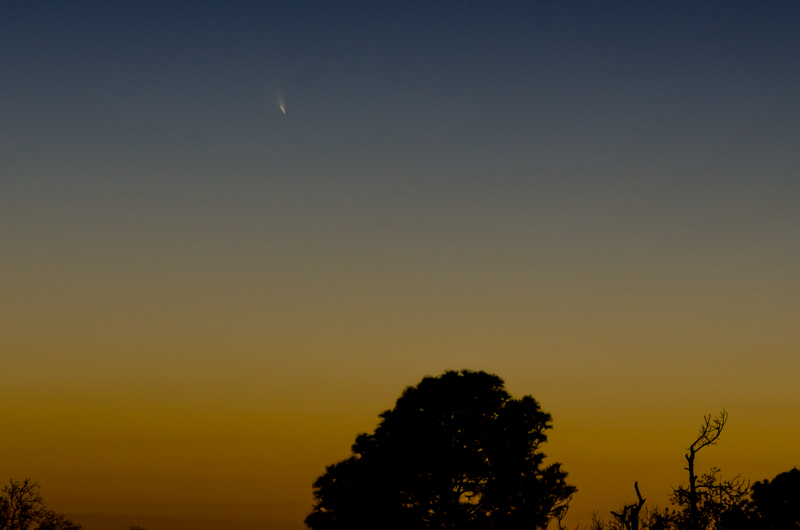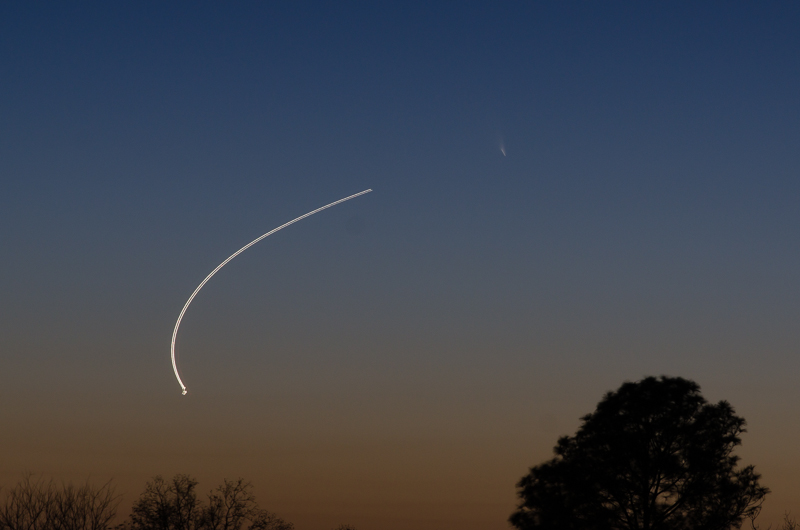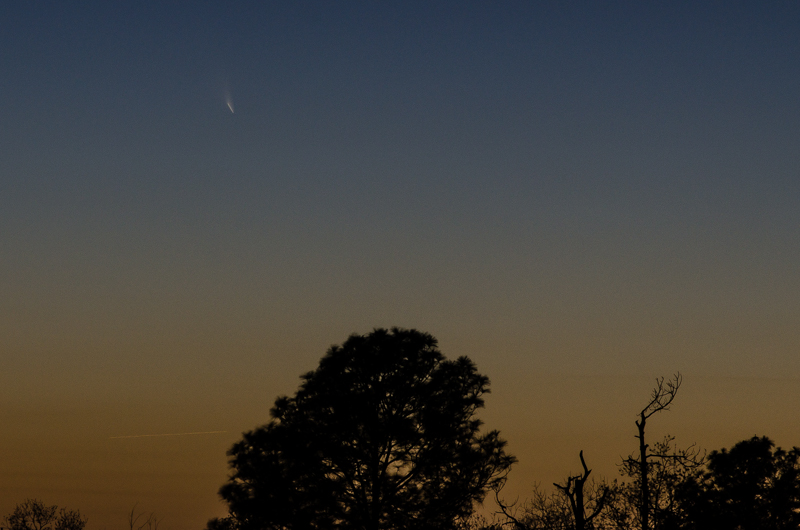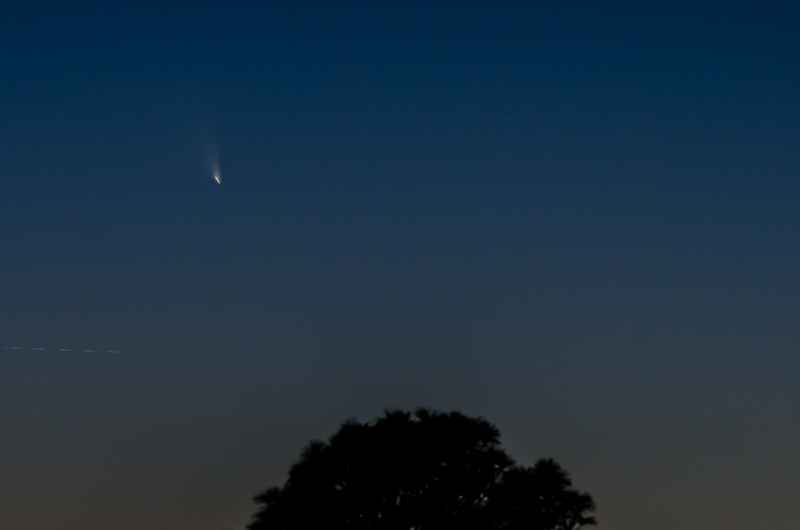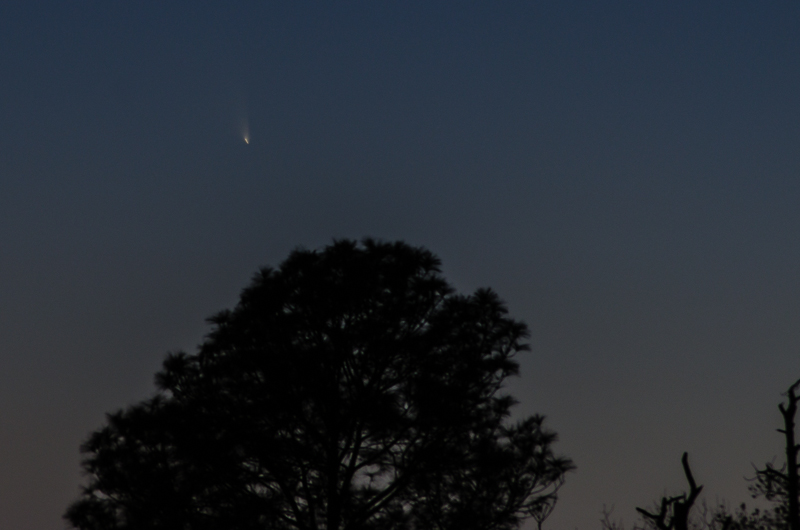Pan Starrs Comet C2011L4. (Panoramic Survey Telescope and Rapid Response System). The pictures are not great, but with the low elevation and backlight from the setting sun, comet is difficult to even see with the naked eye. Binoculars make it easier to pick up and the camera does a decent job of capturing this visitor from deep space. Houston, Texas is not the best place to try to view a comet, especially low on the horizon and at sunset. The abundance of city lights overwhelm faint objects in the sky.
Despite the disadvantage, this comet has a period of about 106,000 years. However need to catch it this time around.
Later this year a sungrazing comet, Comet ISON will make its way to our neighborhood. The comet reached its perihelion or closest approach to the sun on November 28, 2013. It could become a visible to the eye alone even in broad daylight Comet ISON will come within 800,000 miles of the sun on November 28.If this close pass to the sun doesn’t cause a break up, Comet ISON could become very bright. It might be bright enough to see in daylight. If it survives the journey it should go on to have a brilliant show in December 2013. It may have the same brightness as the full moon, but let’s wait and see. I’ve heard this story before.
